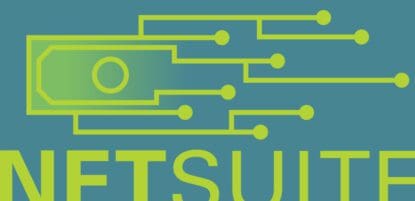In an ever-evolving digital transformation age, using paper checks to conduct business transactions might seem like a thing of the past. Yet, checks remain a primary payment method for many businesses, particularly in the B2B space. Whether it’s issuing payments to suppliers, settling invoices, or handling service fees, the reliance on paper checks persists, likely due to their widespread acceptance and familiarity.
However, this seemingly straightforward payment method has many challenges. From security risks associated with physical checks to the time-consuming nature of manual processing, businesses face a host of obstacles when it comes to B2B check payments. These challenges impact operational efficiency, strain vendor relationships, and compromise regulatory compliance efforts.
This is causing businesses to increasingly turn to innovative solutions to streamline their accounts payable (AP) processes. By integrating AP automation tools and adopting robust internal controls, you can mitigate risks associated with manual processes and pave the way for more streamlined and cost-effective B2B check payments.
Key takeaways
- Despite the continued use of paper checks in B2B payments, issues like fraud risks, delayed processing, and high transaction costs hinder operational and cost efficiency.
- Adopting AP automation tools streamlines the process for B2B check payments, reducing human error and enhancing your overall financial management.
- Strong internal controls and tools like PositivePay can significantly enhance the security and efficiency of B2B check payments.
What are B2B check payments?
B2B check payments involve one business making payments to another using paper checks. Fulfilling payments with checks generally requires businesses to manually write, sign, and mail checks to the recipient. These payments can be used for transactions ranging from supplier payments to service fees.
What percentage of B2B payments are made by checks?
Despite the rising popularity of digital payments, MineralTree’s State of AP Report revealed that 36% of organizations still make over half of payments via check. Traditional paper checks remain a prevalent form of payment in the B2B space due to their widespread acceptance and the ease of integrating them into existing financial processes.
What are the challenges of B2B check payments?
While paper checks offer a widely accepted and straightforward payment option, they also come with several drawbacks. Here are the top challenges associated with B2B check payments.
Security challenges
A study from the Association for Financial Professionals revealed that 65% of organizations experienced fraudulent activities related to checks in the past year. The physical nature of checks makes them vulnerable to unauthorized alteration and duplication, underlining the need for robust internal controls.
Late payments
Mailing and processing checks can delay receipt and increase the risk of them getting lost in the mail. According to the State of AP Report, speed of payment is the most important aspect of the payment experience for vendors. So, late payments don’t just hinder cash flow—they also jeopardize your supplier relationships.
High costs
Traditional paper checks incur processing costs ranging from $4 to $20 per check, including stamps, printing, and labor costs. Paper checks are significantly more expensive compared to digital payment methods like virtual cards.
9 tips for facilitating B2B check payments
B2B check payments come with a number of challenges and considerations. But with the right approach and by streamlining the AP check run with automation, traditional checks can be an effective payment option for your business.
1. Improve the AP check run
The AP check run involves the approval and issuance of checks—and doing it manually requires significant time and effort. With AP automation tools, you can automate approval workflows and facilitate faster check printing. Even if your organization uses a high volume of checks, switching to a digital, automated solution can save you time and resources.
2. Make it easy to track payments and leverage invoice capture
While digital payments make it easy to track invoice payment status, the right AP automation solution enables you to maintain the same level of visibility. Solutions equipped with document management software digitize invoices upon invoice capture, streamlining payment status tracking for traditional checks.
3. Streamline approvals via email
Receiving invoice approval for B2B check payments requires AP staff to track down and continuously follow up with approvers—a cumbersome process without automation. This process is also impractical for remote and hybrid teams.
Leveraging automation in the approval process improves timeliness and accuracy. AP automation solutions enable decision-makers at your organization to approve invoices with just a click of an email, eliminating the need for extensive back-and-forth communication.
4. Print and send checks automatically
Manually printing and mailing checks can be a headache. B2B payment automation tools can print and mail checks without manual intervention, allowing for advanced scheduling and improved efficiency.
5. Improve security measures with PositivePay and internal controls
Internal controls like auditing for duplicate payments play a key role in reducing fraudulent activity and human error. Additionally, solutions that leverage PositivePay provide an additional layer of security by automatically verifying each check issued against its corresponding transaction record before it is cleared.
This process ensures that only checks that have been verified for accuracy in terms of payee, amount, and other critical details are processed, reducing the risk of unauthorized or altered checks being paid.
6. Embrace integrated payables
Historically, accepting multiple forms of payment required various processes and solutions for each payment type. Integrated payable systems simplify and streamline workflows by consolidating digital and check payment processes into a single operation.
7. Convert check spend to ACH or virtual card
If you want to shift away from traditional checks, consider converting a portion of your check spend to ACH or virtual cards. According to the State of AP Report, 63% of organizations are increasing their use of ACH, and 16% are increasing their use of virtual cards. Digital payment methods don’t just reduce processing costs—they also unlock opportunities for financial rebates. In fact, Quartzy, a life sciences company, was on track to earn $100,000 in rebates by switching vendor payments to virtual card.
Did you know? MineralTree can help you enroll vendors in digital payment methods like virtual cards, saving your team time and money.
8. Keep copies of the check
Solutions that digitize checks upon invoice capture enable you to preserve digital copies of every check. Automatically storing digital copies can save you significant time and resources in audit preparation and financial reporting.
9. Leverage data analytics
Leveraging data analytics in your financial operations can provide useful insights into payment practices and processes. Access to these insights helps you optimize payments and forecast cash flow related to accounts payable more effectively.
Did you know? MineralTree grants access to invoices upon capture, so you don’t have to wait until they’re posted to your enterprise resource planning (ERP) system to gain key financial insights.
Case study: Moda Operandi improves the audit process
Moda Operandi, a high-end fashion retailer, faced challenges with manual check processes that were time-consuming and error-prone. These cumbersome processes made maintaining daily AP operations difficult and created regulatory audit challenges.
By automating the AP process with MineralTree’s Invoice-to-Pay Moda Operandi streamlined its check management process and improved its workflow reporting capabilities. These improvements made it significantly easier for the organization to capture, maintain, and access financial records for audits.
Final thoughts
Paper checks remain prevalent in B2B transactions. The integration of automated solutions into your financial processes enables greater efficiency, security, and cost-effectiveness for B2B check payments. MineralTree’s AP automation solution bridges the gap between traditional payment methods and the digital era, helping you optimize your operations and embrace payment innovations.
Request a demo to discover how MineralTree can level up your financial operations.

B2B check payments FAQs
1. What is the typical B2B payment process?
The typical B2B payment process starts with the generation of an invoice, followed by approval workflows and payment execution. Common B2B payment methods include ACH transfers, checks, virtual cards, and credit cards. Each step is crucial to ensuring accurate and timely transactions between businesses.
2. What is the best payment method for B2B?
The optimal payment method for B2B transactions varies based on several factors, including:
- The specific needs of the organization
- Transaction security
- Cost-effectiveness
- The relationship with the vendor
While traditional methods like paper checks still hold value, digital payments such as virtual cards are increasingly favored for speed and traceability. These digital options offer substantial benefits that can enhance business operations.



